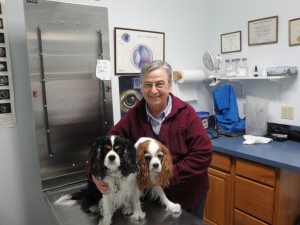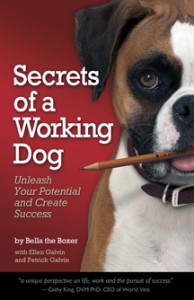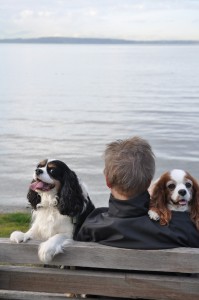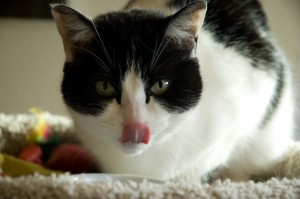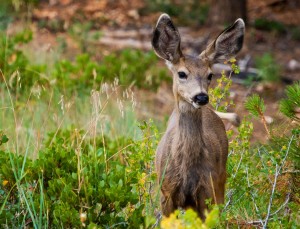 My friend, Margaret, and I decided to visit Yellowstone together. I can’t get enough of Yellowstone, she’d never been, and we knew between the Park’s bounty, our high spirits, and my clumsiness we’d have adventures. Especially since we had no intention of avoiding any (although Margaret thought seeing Old Faithful once was enough, which is just plain wrong).
My friend, Margaret, and I decided to visit Yellowstone together. I can’t get enough of Yellowstone, she’d never been, and we knew between the Park’s bounty, our high spirits, and my clumsiness we’d have adventures. Especially since we had no intention of avoiding any (although Margaret thought seeing Old Faithful once was enough, which is just plain wrong).
Late May is a great time to visit Yellowstone: it can be cold and snowy, but it isn’t very crowded and the animals are active and close. For wild animals, who have no interest in either photo shoots or getting out of the road when you’re trying to drive on it.
Margaret and I are unabashed wolf groupies, so we hung out where the wolves were, and got lucky. News of wolf kills or sightings spreads quickly throughout the Park, which I learned by eavesdropping in bathrooms, a good reason to use social media.
We saw grizzlies and pronghorn antelope and deer, rabbits, coyotes, elk and bison, bald eagles, white pelicans, mountain goats, squirrels, chipmunks, birds of all kinds, animals everywhere. Herds and flocks and whatever you call it when there’s more than one and they aren’t mall rats.
We were heading out of the park when we tallied up our animal sightings. We’d seen pretty much every animal you could expect to see in Yellowstone, but no moose.
“Or beavers,” I said.
“Yeah, no beavers,” she said, giving me a look. I’m not sure she appreciated beavers any more than Old Faithful.
Seeing Yellowstone seemed incomplete without beavers, although I can’t say why. I don’t really think about beavers, and I could probably see them in Seattle, like bald eagles and river otters, which live in our neighborhood. I wanted to see animals we don’t have in Seattle, like wolves and bison and elk. In fact, as many times as I’d been to Yellowstone, I’d never even thought of looking for a beaver. That’s a backcountry thing, and I only do backcountry on videos.
But somehow I had beavers on the brain. It had something to do with tallying up our animal sightings, including baby bison (are they bisettes?) and elk (elkies?), wolves (pups), and grizzlies (cubs). And in the tallying we were thinking of what we hadn’t seen yet, and it was beavers. And moose.
We were on our way out of the Park, heading north from the Norris Geyser Basin, through the narrow, boxed-in, river-fed meadows leading to Mammoth Hot Springs and Gardiner.
We were talking about how lucky we’d been, from geysers and hot springs and mud pots to animal sightings. Then we saw the cars pulled over. In Yellowstone that means animals.
“What is it?” Margaret asked, concentrating on not running over anyone while she parked, a good thing.
It also gave me a chance to play Ranger Robyn, whipping out my binoculars to peek into the private lives of the wild and not-so-interested. I pointed them where everyone else was looking, down into a small grassy meadow. There was a moose placidly grazing, knee-deep in spring grasses.
“A moose!” I yelled. Yippee! We were almost out of the Park, and we could now add a moose to the tally!
We watched the moose for a few minutes as it hung out.
Then I saw it. Something tucked low in the grass, about 50 feet behind the moose. We’d seen elk being chased by grizzlies and wolves, and my heart sank. Briefly (I am, after all, an American). Moose sightings are rare even in Yellowstone, and this scene was pretty as an idyllic painting. And possibly not benign.
“Oh no!” I yelled. “There’s something else there, sneaking up on the moose!”
“What?” Margaret asked anxiously.
I could see the top of the head. What could that be? Wait, there was water nearby, lots of it. The animal was small.
“It’s a beaver!” I yelled.
“Really?” Margaret asked, excited.
And then the moose turned and looked at the beaver. And calmly meandered over to it, head down to peer closer.
“The moose spotted it and is going over!” I reported.
Do beavers fight moose? If so, why? Don’t they eat sawdust? What kind of a trick could a beaver pull to get a fresh moose on its plate? Did I really have to see the moose cream it? Yes. We need to know about nature, so we can avoid it.
But the moose wasn’t looking mad. Or violent. In fact, it looked, and acted, like it was in love. Moony and gentle.
“That moose likes the beaver,” I reported.
Margaret was grumbling, possibly something about city slickers and idiots, trying to distract me as she grabbed for the binoculars. I dodged her, hard to do in a car.
Then the moose moved in on the beaver, peering down at it, tender and loving. Then it …
“The moose is kissing the beaver,” I yelled.
Margaret yelled, “What? No, no, no.”
I didn’t get it either.
“Wait,” I said. “That can’t be right.” Even I knew that much about nature.
I stared at the moose kissing the beaver, who was kissing the moose back. Then the beaver stood up—wobbling on its baby moose legs.
“It’s a baby moose! The moose is kissing her baby!”
We howled in laughter. There’s nothing like friendship, when you can be dumb and your friends just laugh with you.
We watched the moose and her baby nuzzle each other, not a care in the world. Right then. I knew the odds in Yellowstone, even for moose. I hoped they’d make it, together.
Margaret and I still laugh at me thinking I’d just witnessed the impossible: moose kissing beaver. But really, wouldn’t it be great? Isn’t that what building community and multi-species families is all about, that anything is possible with love?
Frankly, I want to always be a person who’d think a moose and a beaver would kiss. Especially in Yellowstone.
What about you?
(c) 2011 Robyn M Fritz
 Sometimes we wonder if we’ve done the right thing in life. Sometimes we get lucky and know we did, even though we were just trying to get by. Sometimes that story co-incidentally defines another, which is what building community is all about.
Sometimes we wonder if we’ve done the right thing in life. Sometimes we get lucky and know we did, even though we were just trying to get by. Sometimes that story co-incidentally defines another, which is what building community is all about.